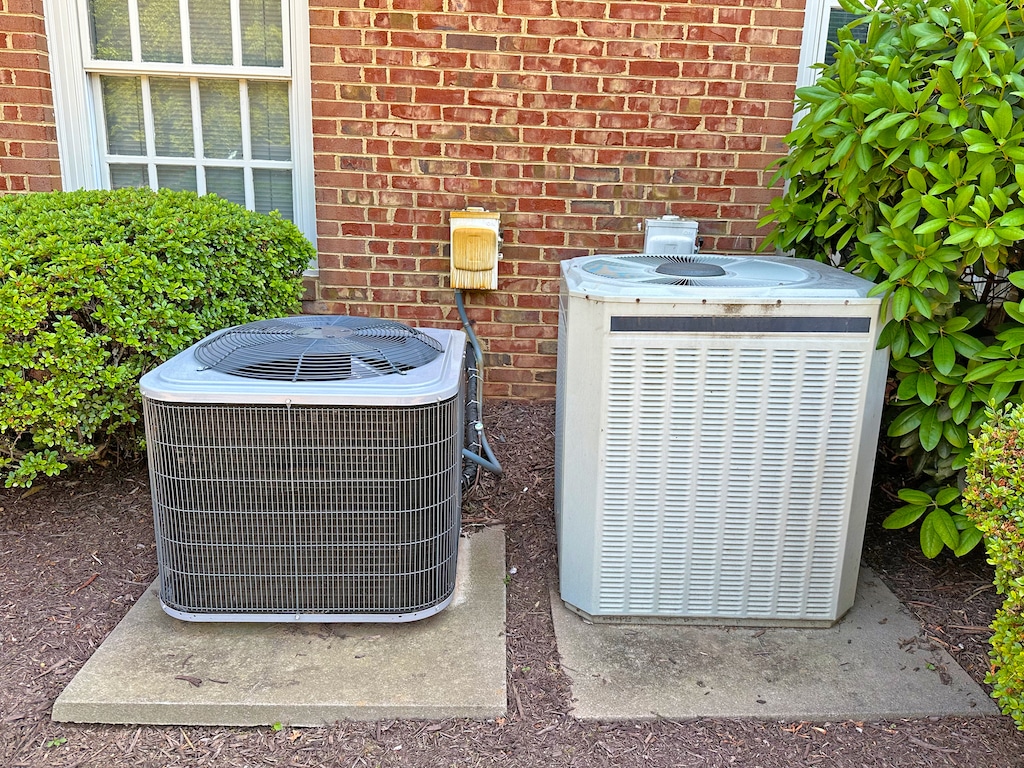
Efficient Heating Solutions for Texas Winters
Do you wonder how cold Texas winters can get and what it means for your home’s heating solutions?
- Heating Solutions: Central heating, heat pumps, and radiant floor heating are suitable for Texas homes, each with unique benefits and drawbacks.
- Variable Climate: Texas winters can vary, with mild days and sudden cold fronts, requiring heating solutions that adapt quickly.
- Energy Efficiency: High-efficiency heating solutions are beneficial, reducing costs and environmental impact.
- Choosing the Right System: Consider local climate, home size, and energy efficiency. Heating solutions like heat pumps are ideal for Texas’s moderate winters.
- Installation and Maintenance: Proper installation by professionals ensures efficiency and longevity. Regular maintenance is crucial for performance.
These considerations help Texas homeowners maintain comfort during unpredictable winters while managing energy usage effectively.
Despite its reputation for hot summers, Texas can experience surprisingly chilly winters, particularly in the northern and central regions. Understanding the unique winter climate in Texas is essential for choosing the right heating solutions for your home.
Winter weather in Texas is characterized by significant fluctuations. A typical winter might include mild, sunny days followed by cold fronts bringing icy winds and even snow in some areas. These cold fronts can lead to sharp temperature drops, sometimes within a single day. This variability requires a heating system that can quickly adapt to changing conditions to maintain indoor comfort.
Efficient heating solutions are designed to adapt to Texas’s unpredictable winter weather, providing consistent warmth while optimizing energy use. This adaptability can save homeowners money and reduce environmental impact. With the right heating solutions, you can ensure your home stays cozy throughout the winter, no matter how the weather changes.
Types of Heating Solutions for Texas Homes
Choosing the right heating solutions for your Texas home is crucial for comfort and efficiency. Given the state’s diverse climate, it’s important to understand the different heating options available and how they perform under various conditions.
Central Heating Solutions
Central heating solutions are a popular choice for many Texas homes. These systems distribute heat evenly throughout the house using a network of ducts. They can run on various energy sources, including natural gas, electricity, or oil.
Benefits:
- Even heat distribution: Provides consistent warmth across all rooms.
- Efficiency: Modern central heating systems are highly efficient, especially those with a high Annual Fuel Utilization Efficiency (AFUE) rating.
- Control: Central heating allows for easy temperature regulation with a single thermostat.
Drawbacks:
- Installation cost: Can be expensive to install, especially in homes without existing ductwork.
- Maintenance: Requires regular maintenance to keep ducts clean and the system running efficiently.
Heat Pumps
Heat pumps are an energy-efficient alternative to traditional heating solutions, particularly well-suited for milder Texas winters. They work by transferring heat from the outside air or ground into your home.
Types of Heat Pumps:
- Air-source heat pumps: Extract heat from the air outside.
- Ground-source (geothermal) heat pumps: Extract heat from the ground.
Benefits:
- Energy efficiency: Uses less energy compared to traditional heating solutions.
- Dual functionality: Can be used for both heating in winter and cooling in summer.
- Environmental impact: Lower carbon footprint due to reduced energy consumption.
Drawbacks:
- Performance in extreme cold: Less effective in very low temperatures, but Texas’s moderate winters are usually suitable.
- Initial cost: Higher upfront cost, particularly for geothermal heating solutions.
Radiant Floor Heating
Radiant floor heating is a luxurious and efficient way to heat your home. This system involves installing heating elements beneath the floor, providing warmth that radiates upwards.
Benefits:
- Comfort: Delivers even, consistent heat directly to the floors, creating a cozy environment.
- Efficiency: Can be more efficient than forced-air systems because it eliminates duct losses.
- Quiet operation: Operates silently without the noise of blowing air.
Drawbacks:
- Installation complexity: Best installed during new construction or major renovations due to the need to access the floor.
- Cost: Higher installation costs compared to other heating methods.
Choosing the right heating solution involves balancing initial costs, efficiency, and the specific climate needs of your Texas home. Each system has its pros and cons, but with careful consideration, you can find the ideal setup for comfortable, efficient heating.
Energy Efficiency Considerations
Ensuring energy efficiency in your home’s heating system is not just about reducing costs, but also about minimizing environmental impact and enhancing overall comfort. With Texas’s fluctuating winter temperatures, investing in an energy-efficient heating system can provide significant long-term benefits.
Importance of Energy Efficiency
Why is energy efficiency so crucial for heating solutions?
- Cost Savings: Efficient heating solutions use less energy, leading to lower utility bills. In Texas, where winter weather can be unpredictable, a more efficient system can significantly reduce heating costs over time.
- Environmental Impact: Lower energy consumption means a reduced carbon footprint. By choosing energy-efficient heating solutions, homeowners can contribute to environmental conservation.
- System Longevity: Efficient heating solutions often experience less strain, which can result in fewer repairs and a longer lifespan.
- Enhanced Comfort: Energy-efficient heating solutions provide consistent warmth, avoiding the uneven heating that can occur with less efficient options.
Energy-Efficient Heating Systems
Several heating systems are known for their energy efficiency. Here are a few top choices:
- High-Efficiency Furnaces: Modern furnaces with a high Annual Fuel Utilization Efficiency (AFUE) rating can achieve efficiencies of 90% or more, ensuring that a large portion of the fuel consumed is converted into heat.
- Heat Pumps: Air-source and ground-source heat pumps are renowned for their efficiency, particularly in moderate climates like Texas. They transfer heat rather than generate it, using significantly less energy.
- Radiant Heating: Radiant floor heating solutions can be very efficient as they directly warm the floor and objects in a room, reducing the need for high air temperatures and eliminating duct losses.
Benefits of Energy-Saving Practices
- Reduced Energy Bills: Simple changes can lead to significant savings. For example, lowering your thermostat by just a few degrees can noticeably cut heating costs.
- Increased Comfort: Energy-saving practices help maintain a consistent indoor temperature, enhancing overall comfort.
- Enhanced Home Value: Energy-efficient homes are often more attractive to buyers, potentially increasing your property’s market value.
Choosing an energy-efficient heating system and adopting energy-saving practices can provide numerous benefits, from cost savings to environmental impact. By understanding the importance of energy efficiency and selecting the right system, Texas homeowners can ensure their homes remain warm and comfortable throughout the winter months.
Choosing the Right Heating Solutions for Your Home
Selecting the ideal heating solutions for your home in Texas can be challenging, given the variety of options available and the unique climate conditions. Understanding the key factors to consider, comparing different solutions, and assessing long-term cost implications can help you make an informed decision.
Factors to Consider
When choosing a heating system, several factors should guide your decision:
- Climate: Texas has diverse climates, from mild winters in the south to colder conditions in the north. Choose a system that performs well under your local weather conditions.
- Home Size and Layout: The size and layout of your home significantly influence the effectiveness of different heating solutions. Larger homes may benefit from central heating, while smaller homes might find heat pumps or radiant heating more efficient.
- Energy Efficiency: Opt for solutions with high efficiency ratings to reduce energy consumption and costs. Look for ENERGY STAR® certified products.
- Installation Costs: Consider the upfront costs of installing the system, including any necessary modifications to your home.
- Maintenance Requirements: Some solutions require more frequent maintenance than others. Ensure you understand the long-term upkeep needs.
- Environmental Impact: If sustainability is a priority, consider the environmental footprint of the heating system. Heat pumps, for instance, are more environmentally friendly than traditional furnaces.
Long-term Cost Implications
Evaluating the long-term costs of different heating systems is crucial for making a financially sound decision:
- Initial Installation Costs:
- Central heating systems typically have higher installation costs due to the need for ductwork.
- Heat pumps, especially geothermal, also have significant upfront costs but can be more economical in the long run.
- Radiant floor heating is costly to install but may save money over time due to its efficiency.
- Operational Costs:
- Central heating systems can be more expensive to run, particularly if they are not energy-efficient.
- Heat pumps generally have lower operational costs due to their high efficiency.
- Radiant heating can reduce monthly energy bills, especially when combined with energy-efficient flooring materials.
- Maintenance Costs:
- Central heating systems require regular duct cleaning and filter changes, which can add up over time.
- Heat pumps need periodic maintenance but often less so than traditional systems.
- Radiant floor heating has minimal maintenance needs once installed.
- Lifespan and Replacement Costs:
- Central heating systems and heat pumps typically last 15-20 years with proper maintenance.
- Radiant floor heating can last longer, up to 35 years, given its protected installation under floors.
Making the Decision
When deciding on a heating solution, weigh the initial installation costs against the long-term savings and benefits. Consider your local climate, the size of your home, and your priorities in terms of energy efficiency and environmental impact. By carefully evaluating these factors, you can choose a heating system that offers the best balance of comfort, cost, and sustainability for your Texas home.

Installation Tips and Best Practices
Proper installation is crucial for ensuring the efficiency and longevity of your heating system. Whether you choose to hire a professional or consider a DIY approach, following best practices can make a significant difference in performance and safety.
Hiring a Professional
For most homeowners, hiring a professional HVAC technician is the best option for installing a heating system. Here’s why:
- Expertise and Experience: Professionals have the training and experience to handle complex installations, ensuring that the system is set up correctly.
- Safety: Installation involves electrical connections, gas lines, and other potentially hazardous elements. Professionals follow safety protocols to prevent accidents.
- Efficiency: Proper installation by a professional ensures that the system operates at its maximum efficiency, saving you money in the long run.
- Warranty: Many manufacturers require professional installation to maintain the warranty on the equipment. DIY installation can void these warranties.
DIY Considerations
If you have the skills and confidence to install a heating system yourself, here are some important considerations:
- Knowledge and Tools: Ensure you have a thorough understanding of the installation process and the necessary tools. Refer to the manufacturer’s instructions and guides.
- Permits and Codes: Check local building codes and obtain any required permits before starting the installation. Compliance with local regulations is essential.
- Electrical Work: If the installation involves electrical work, it’s often best to hire a licensed electrician to handle this part.
- Gas Connections: For systems using natural gas, improper installation can lead to dangerous leaks. Professional handling is strongly recommended.
- Help from a Pro: Even if you’re doing most of the work yourself, consider having a professional inspect your setup before you finalize the installation.
Important Installation Tips
Regardless of who installs your heating system, following these tips can enhance performance and safety:
- Location Matters: Place your heating system in an area with adequate ventilation. Avoid installing it near flammable materials or in confined spaces.
- Proper Sizing: Ensure the heating system is appropriately sized for your home. An undersized system will struggle to heat your home, while an oversized one will waste energy.
- Ductwork and Insulation: For central heating systems, ensure ducts are properly sealed and insulated to prevent heat loss. This improves efficiency and reduces energy bills.
- Thermostat Placement: Install the thermostat away from direct sunlight, drafts, and heat sources to ensure accurate temperature readings.
- Test the System: After installation, thoroughly test the system to ensure it operates correctly. Check for any unusual noises, leaks, or performance issues.
- Regular Maintenance: Schedule regular maintenance checks, even if the system is newly installed. This includes inspecting filters, cleaning ducts, and checking electrical connections.
By following these installation tips and best practices, you can ensure that your heating system is set up for optimal performance and longevity. Whether you choose to hire a professional or tackle the project yourself, careful planning and attention to detail will pay off in the long run.
Maintenance and Upkeep
Maintaining your heating system is vital for ensuring its efficiency, performance, and longevity. Regular maintenance can prevent unexpected breakdowns and extend the life of your system, saving you money in the long run. Here are some essential tasks, signs of potential issues, and guidelines on when to call a professional.
Regular Maintenance Tasks
Regular maintenance tasks help keep your heating system running smoothly and efficiently. Here’s a checklist of tasks you should perform:
- Change Air Filters: Replace air filters every 1-3 months to ensure proper airflow and reduce strain on the system. Clean filters improve indoor air quality and system efficiency.
- Inspect Ducts: Check ductwork for leaks, blockages, or damage. Sealing leaks can improve efficiency and reduce energy bills.
- Clean Vents and Registers: Keep vents and registers free of dust and obstructions to maintain good airflow.
- Check Thermostat Settings: Ensure your thermostat is working correctly and set to a comfortable temperature. Consider upgrading to a programmable or smart thermostat for better control.
- Examine the System: Look for signs of wear and tear on the system components, such as belts, bearings, and electrical connections. Tighten loose connections and replace worn parts as needed.
- Lubricate Moving Parts: Lubricate the motor, bearings, and other moving parts to reduce friction and wear.
- Test the System: Run the system to check for proper operation. Listen for unusual noises and monitor for consistent heat distribution.
Signs of Potential Issues
Identifying problems early can prevent costly repairs and ensure your system continues to operate efficiently. Watch for these signs of potential issues:
- Inconsistent Heating: Uneven temperatures or cold spots in your home may indicate problems with your heating system or ductwork.
- Strange Noises: Banging, clanking, or squealing noises can signal mechanical issues that need attention.
- Increased Energy Bills: A sudden spike in energy bills without a change in usage patterns may indicate that your system is working harder than necessary due to underlying issues.
- Frequent Cycling: If your system turns on and off frequently, it may be short-cycling, which can be caused by a variety of issues, including thermostat problems or overheating.
- Poor Air Quality: Dusty or musty odors, or an increase in allergy symptoms, can be signs of dirty filters or ductwork needing cleaning.

When to Call a Professional
While regular maintenance tasks can be handled by homeowners, certain situations require the expertise of a professional HVAC technician:
- Annual Inspection: Schedule an annual inspection by a professional to ensure your system is in top condition. Professionals can identify and address issues that may not be apparent to homeowners.
- Major Repairs: If you notice any signs of significant problems, such as frequent breakdowns or unusual noises, it’s best to call a professional. Attempting to fix these issues yourself can lead to further damage.
- System Inefficiency: If your system is not heating your home efficiently, a professional can diagnose and resolve the issue, ensuring optimal performance.
- Upgrading Equipment: If you’re considering upgrading your heating system, a professional can provide expert advice on the best options for your home and handle the installation.
- Safety Concerns: Any issues involving gas connections, electrical components, or carbon monoxide should be addressed by a professional immediately to ensure the safety of your home.
Preventive Measures
Taking preventive measures can help avoid common heating problems:
- Seal and Insulate: Ensure your home is well-sealed and insulated to prevent heat loss and reduce strain on your heating system.
- Regularly Check for Leaks: Inspect your home for drafts around windows, doors, and ducts. Seal any leaks to improve efficiency.
- Maintain Proper Humidity: Use a humidifier to maintain optimal humidity levels, which can improve comfort and system efficiency.
- Educate Household Members: Ensure everyone in your home knows how to operate the heating system properly and understands the importance of regular maintenance.
By adhering to these maintenance and upkeep practices, you can ensure your heating system remains efficient, reliable, and effective throughout the winter months. Regular maintenance not only extends the life of your system but also enhances your home’s comfort and energy efficiency.
Frequently Asked Questions (FAQ)
- How do I know which heating solution is right for me?
Choosing the right heating solution depends on several factors, including your home size, local climate, and energy efficiency goals. Assess your needs, consult with a professional, and consider the long-term costs and benefits of each option.
- What are the most energy-efficient heating options?
Heat pumps and high-efficiency furnaces are among the most energy-efficient heating options. Radiant floor heating can also be very efficient when installed properly. Look for systems with high AFUE ratings and ENERGY STAR® certifications.
- How often should I service my heating system?
Your heating system should be serviced annually by a professional. Regular maintenance tasks, such as changing filters and inspecting ducts, should be performed more frequently, typically every 1-3 months.
- What are the signs that my heating system needs repair?
Signs that your heating system needs repair include inconsistent heating, strange noises, increased energy bills, frequent cycling, and poor air quality. If you notice any of these issues, it’s best to call a professional for an inspection.
- How can I reduce my heating costs?
To reduce heating costs, consider using a programmable thermostat, sealing leaks, and improving home insulation. Regular maintenance and choosing an energy-efficient heating system can also significantly lower your energy bills.


